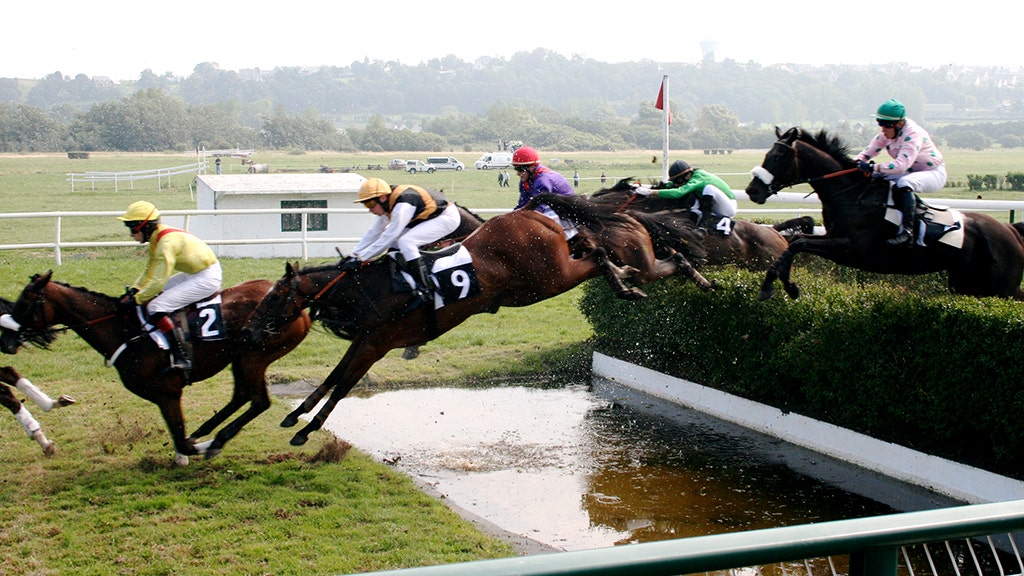The Mechanics of a Steeplechase Fall

Steeplechase racing, a thrilling blend of speed and agility, inherently carries the risk of falls. These incidents, while unfortunate, provide valuable insights into the complex interplay of factors that contribute to their occurrence. Understanding the mechanics of a steeplechase fall is crucial for both riders and spectators alike, allowing for a deeper appreciation of the sport’s inherent challenges and the safety measures in place to mitigate them.
Causes of Falls
Falls in steeplechase racing can be attributed to a combination of factors, including the unique challenges posed by the obstacles, the demanding terrain, and the occasional rider error.
- Obstacles: Steeplechase courses are renowned for their imposing obstacles, such as fences, water jumps, and banks. These obstacles, while designed to be challenging yet safe, can present significant risks if not negotiated correctly. A horse’s refusal to jump, a misjudged approach, or a stumble upon landing can lead to a fall.
- Terrain: The uneven terrain of steeplechase courses, with its undulating hills and soft ground, can also contribute to falls. Horses may lose their footing on slippery surfaces, stumble on uneven ground, or be caught off balance by sudden changes in elevation.
- Rider Error: Rider error can also play a role in falls, particularly in situations where the rider’s judgment is compromised or their riding technique is flawed. Factors such as poor communication with the horse, incorrect positioning, or a lack of experience can lead to a fall.
Biomechanics of a Fall
A steeplechase fall is a complex biomechanical event involving a rapid deceleration of both horse and rider. The forces involved can be substantial, potentially leading to serious injuries for both parties.
The impact of a fall can generate forces several times the horse’s body weight, particularly when the horse lands on its legs or chest.
- Horse: The horse’s body is subjected to significant impact forces upon landing, particularly if it falls on its legs or chest. This can lead to a range of injuries, including fractures, ligament tears, and soft tissue damage.
- Rider: The rider is also at risk of serious injury in a fall, as they are thrown from the horse and subjected to the forces of impact and deceleration. Common injuries sustained by riders include concussions, fractures, and spinal cord injuries.
Safety Measures, Steeplechase fall
To mitigate the risks of falls, a number of safety measures are implemented in steeplechase racing, including protective gear and course design.
- Protective Gear: Riders are required to wear helmets, body protectors, and boots designed to absorb impact forces and reduce the risk of serious injury.
- Course Design: Steeplechase courses are designed with safety in mind, featuring carefully constructed obstacles, well-maintained terrain, and ample landing areas. Course officials also conduct regular inspections to ensure the safety of the course and its obstacles.
Steeplechase fall – You know that feeling when you’re watching a steeplechase and someone takes a nasty tumble? It’s like, “Ouch, dude, that’s gotta hurt!” But hey, at least they’re not stuck in a boring office chair all day. If they were, they could upgrade to the humanscale freedom leather task chair with headrest , which is basically like a throne for your behind.
Maybe then they’d be less likely to fall, because comfort and support are key, even when you’re not leaping over hurdles.
You know, watching a steeplechase fall is like watching a perfectly crafted comedy routine. The anticipation, the build-up, and then BAM! They’re down. It’s almost like they’re trying to recreate that classic “office chair spin” move, except instead of landing gracefully in a red leather chair office , they end up face-first in the mud.
Talk about a dramatic exit!